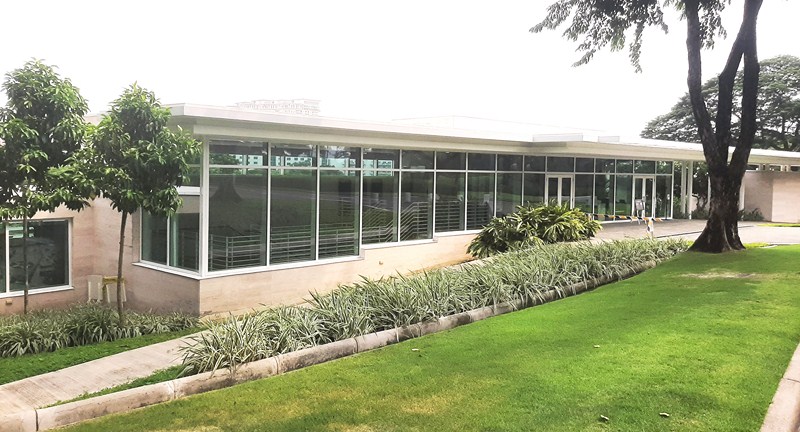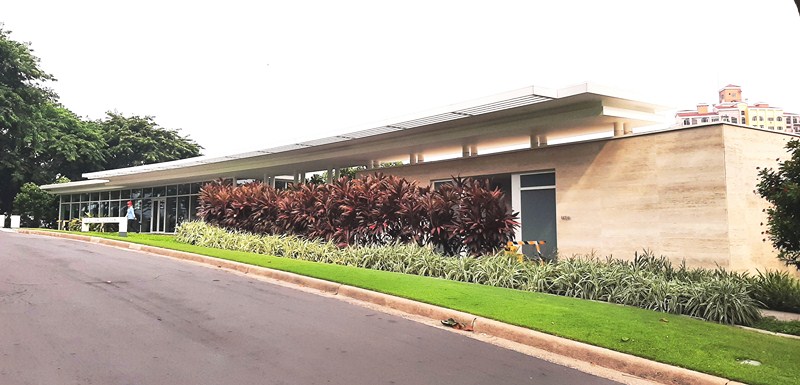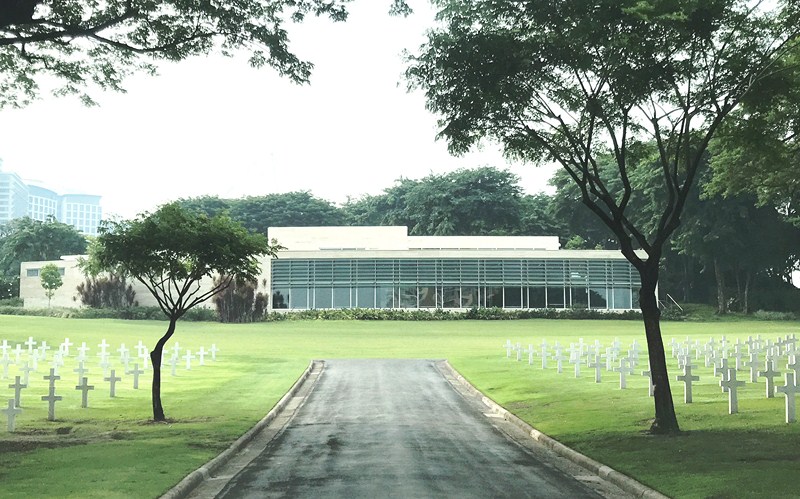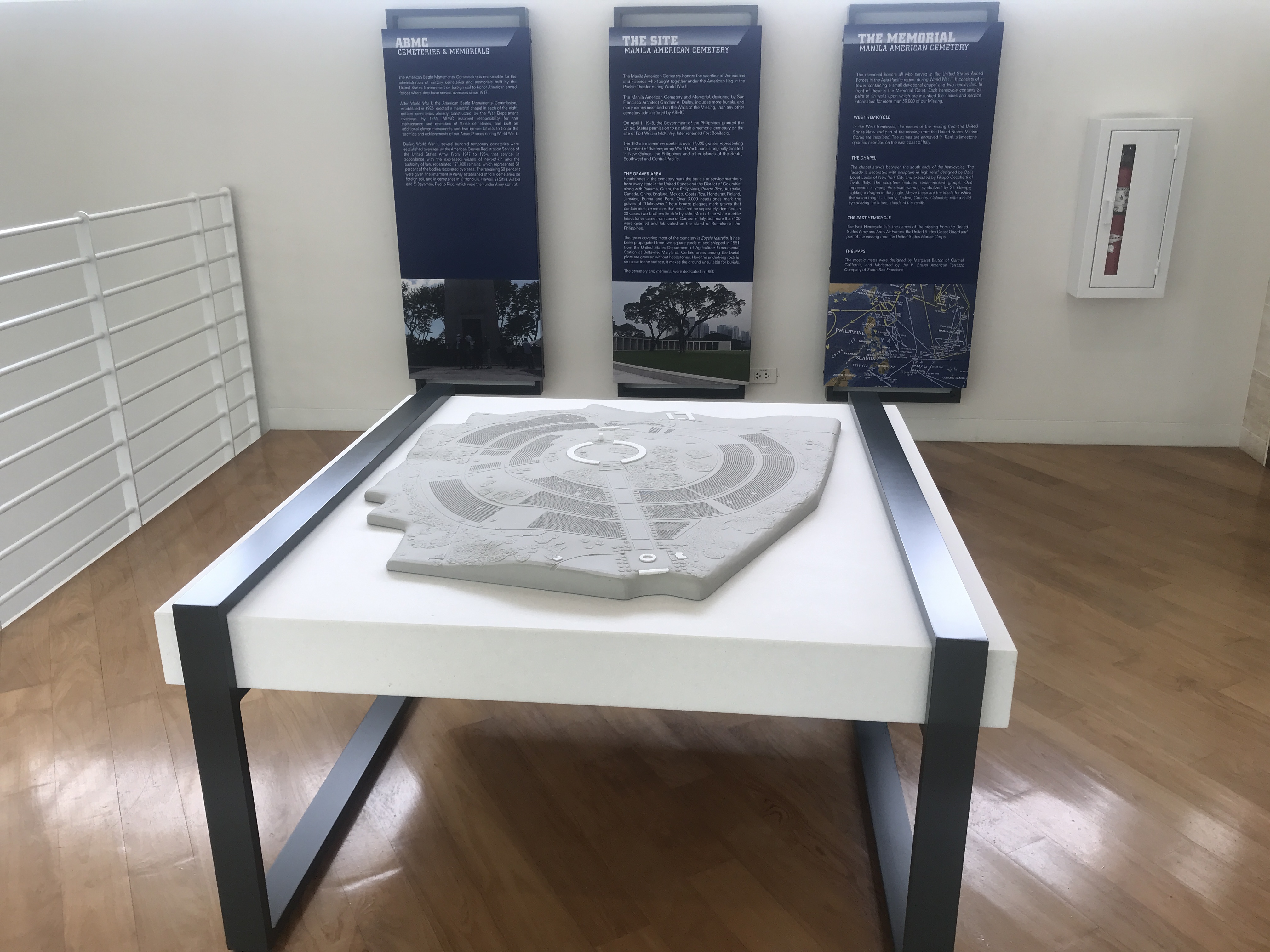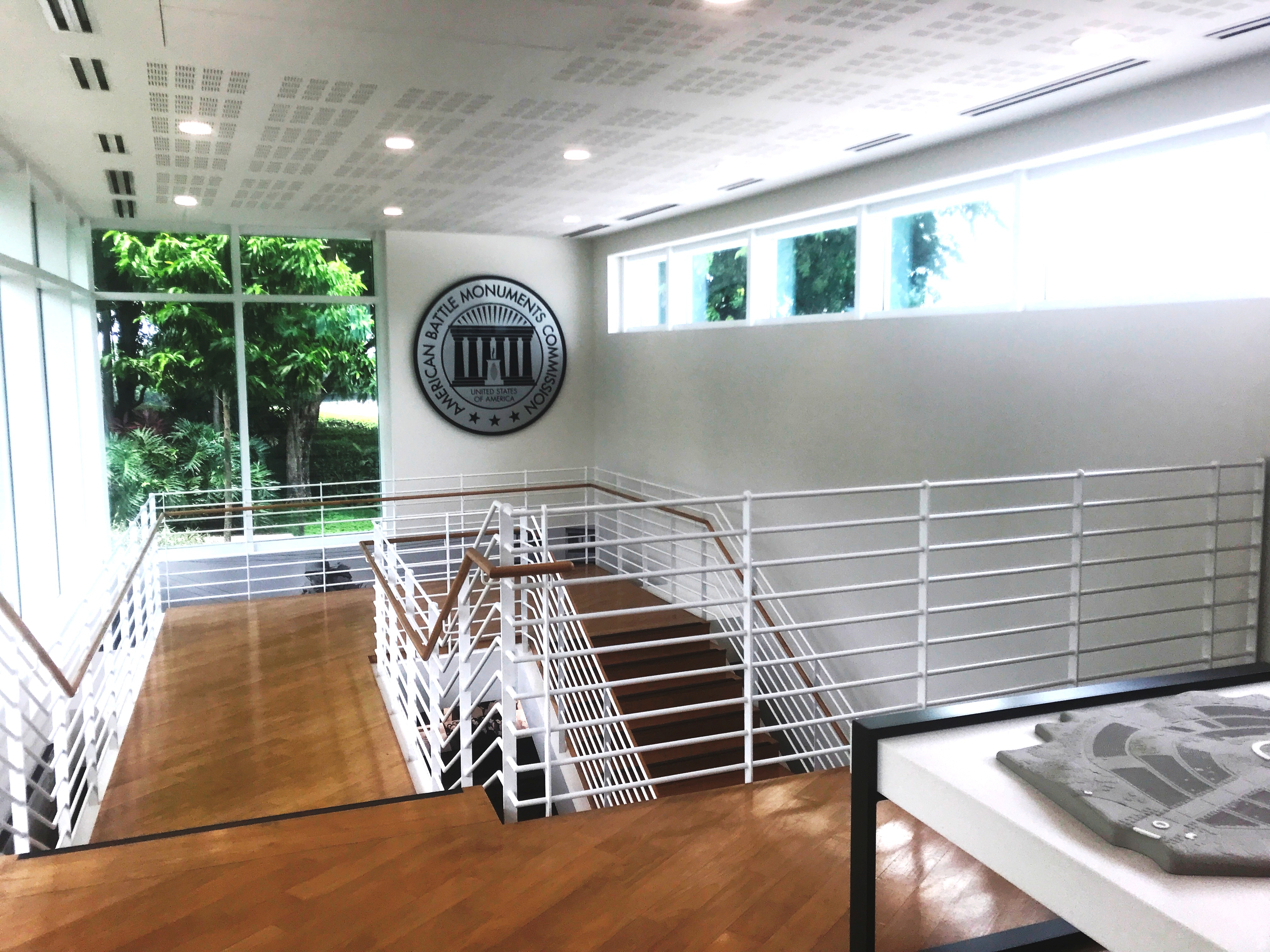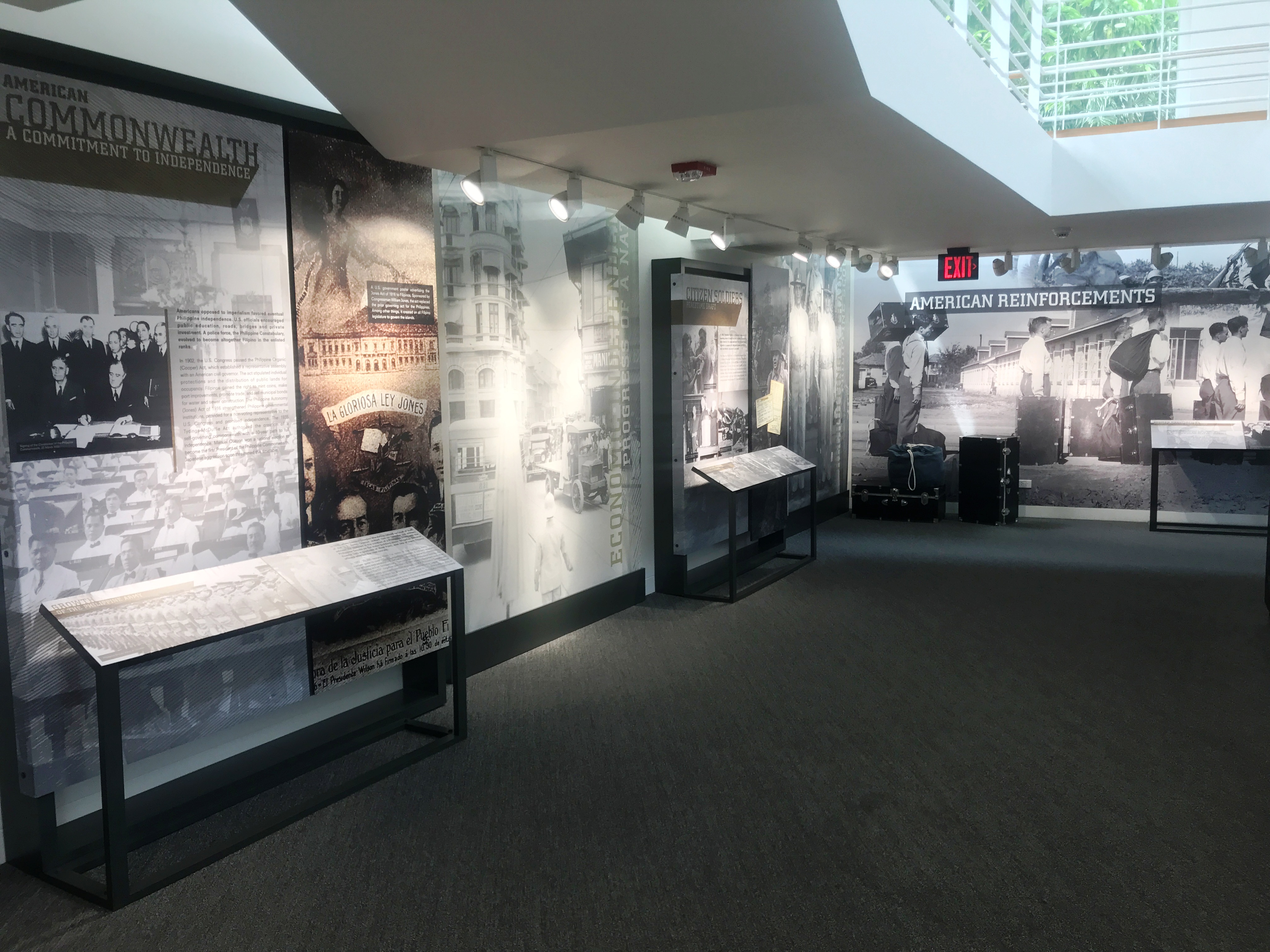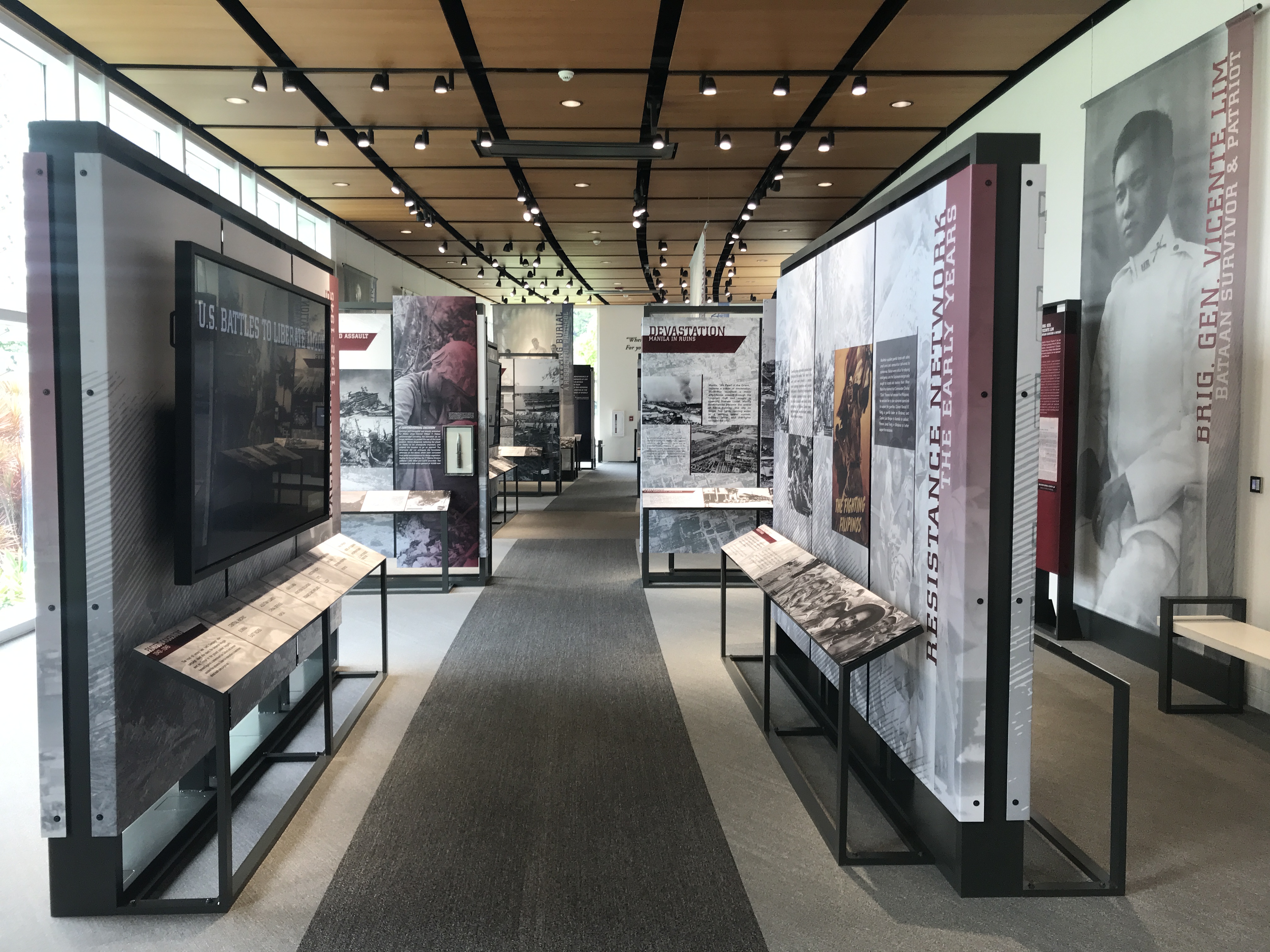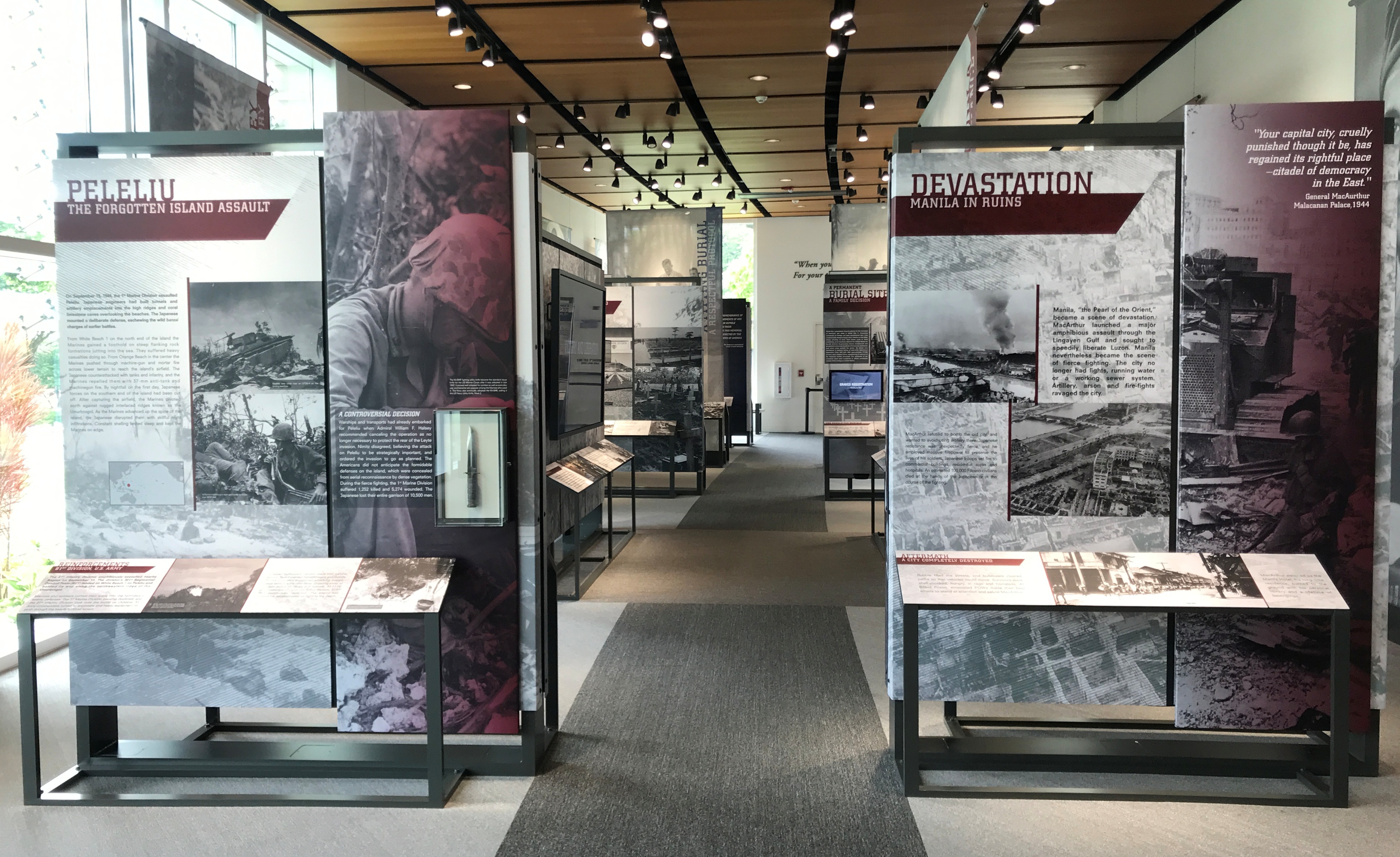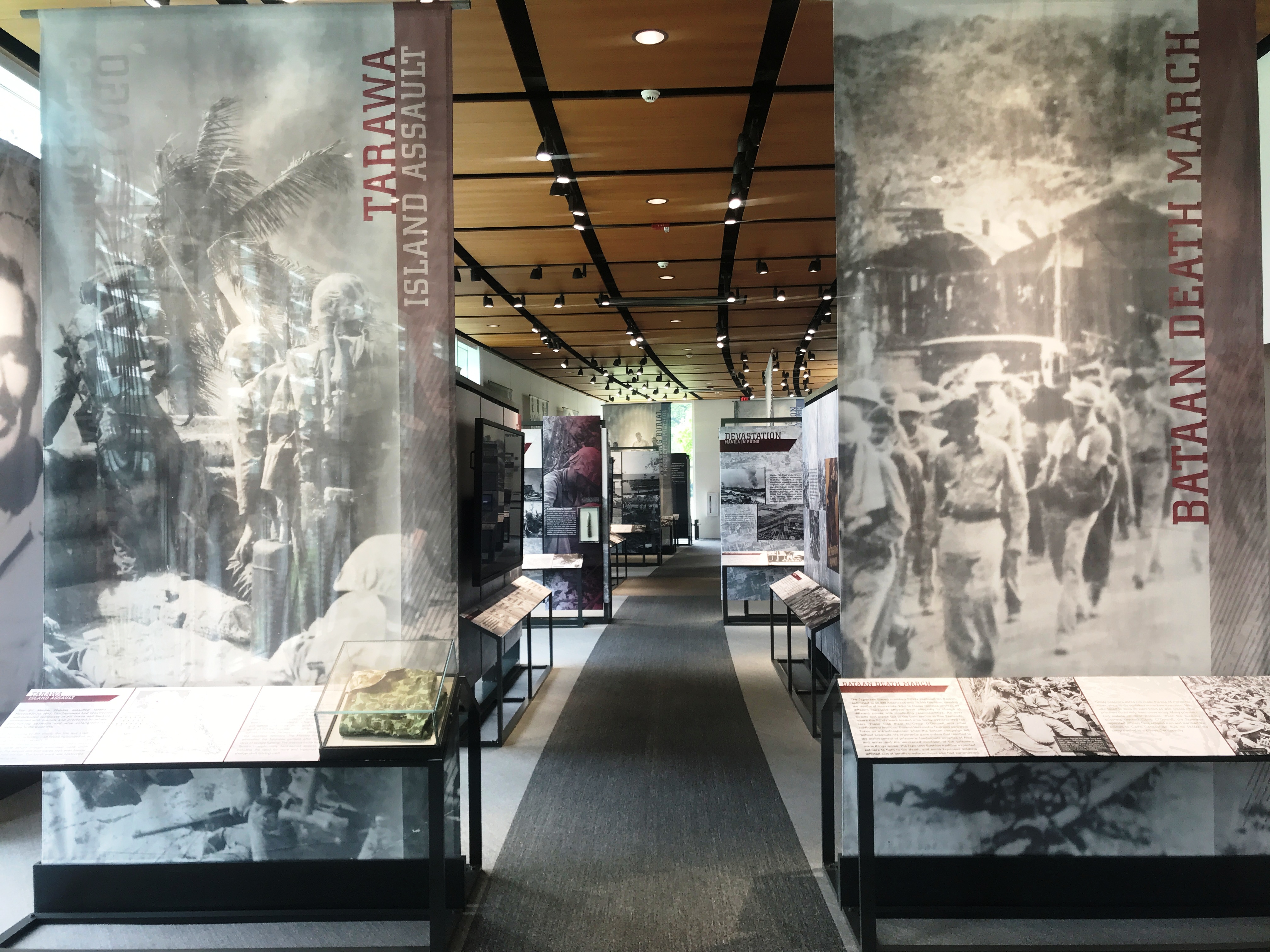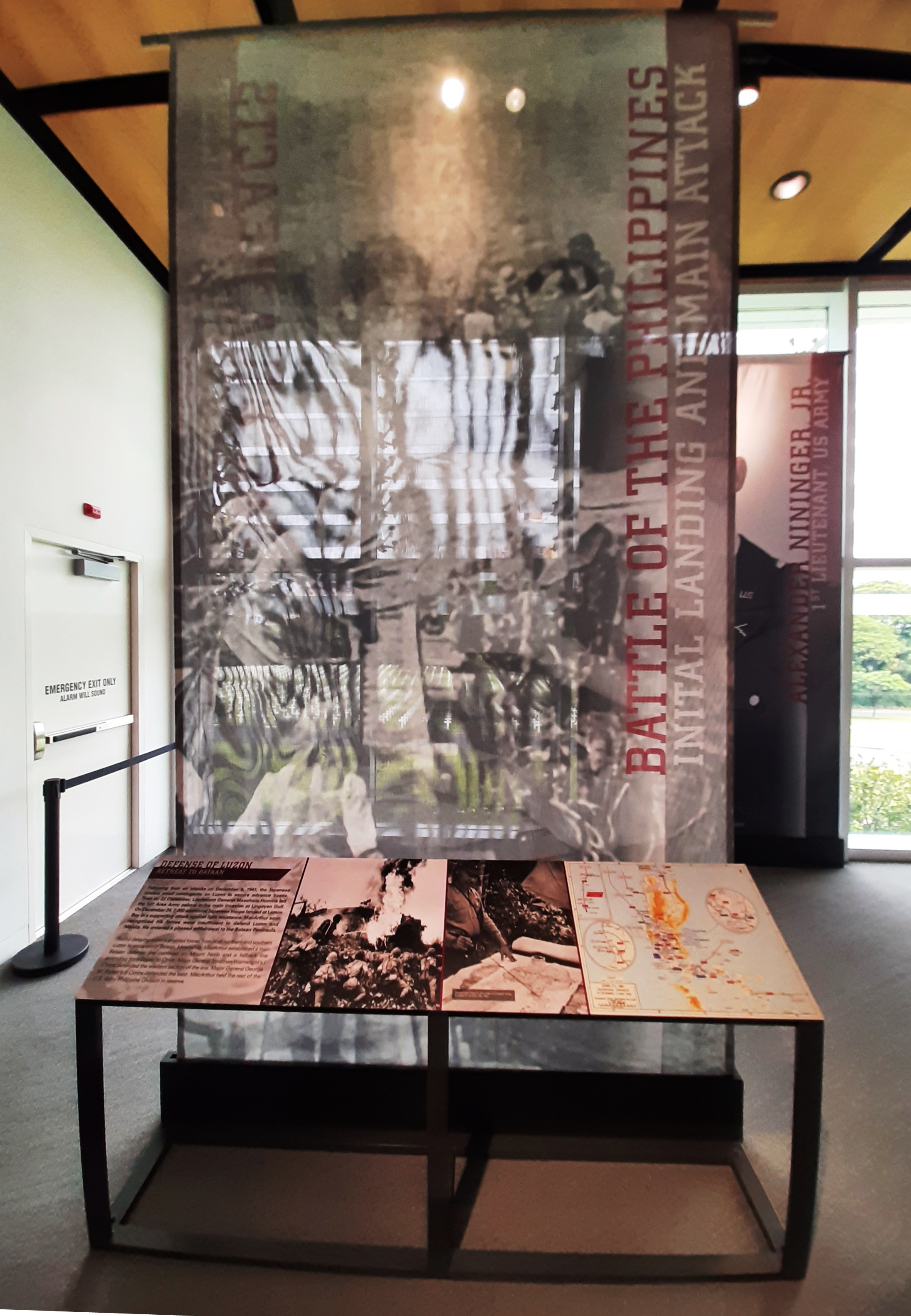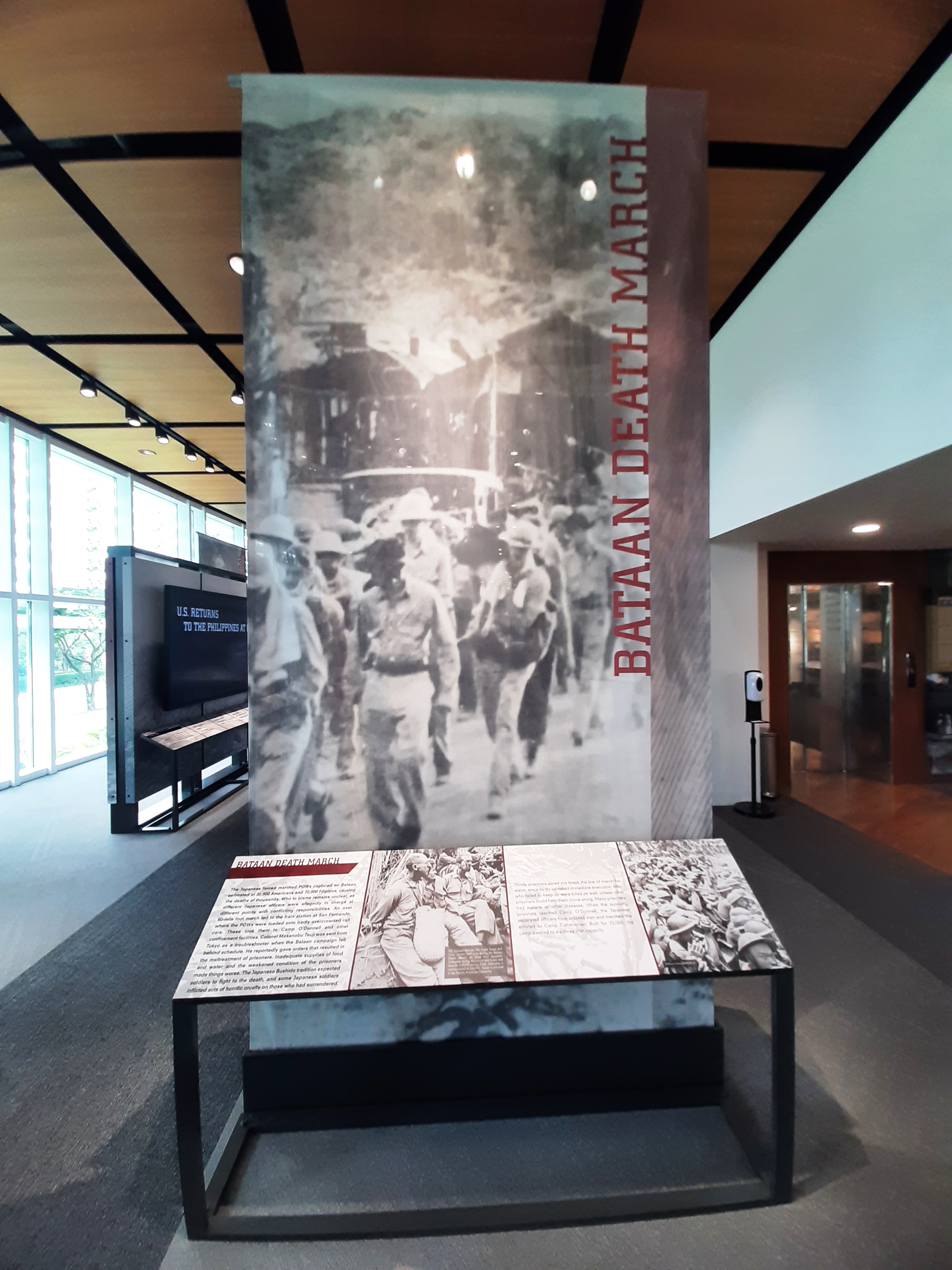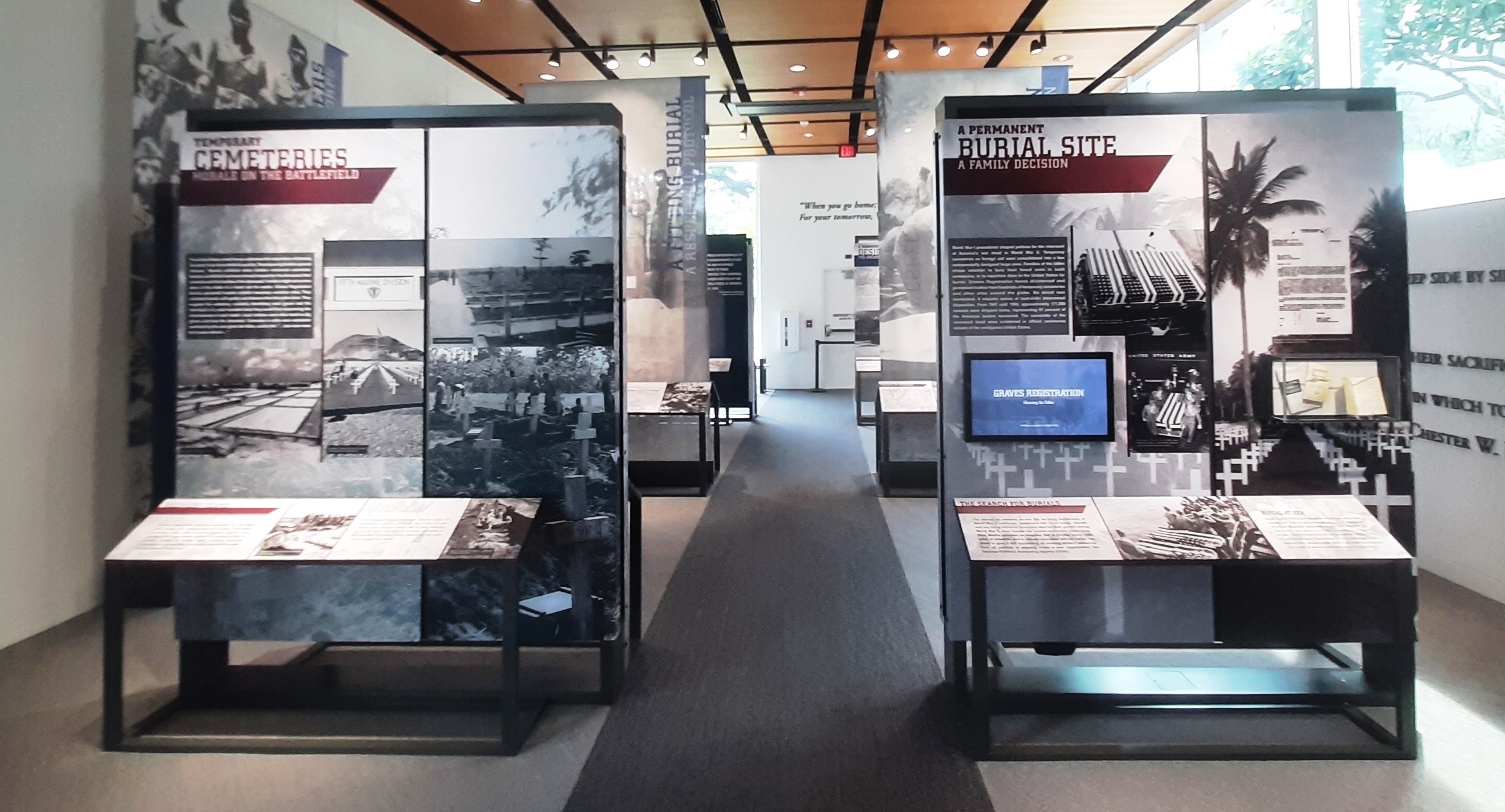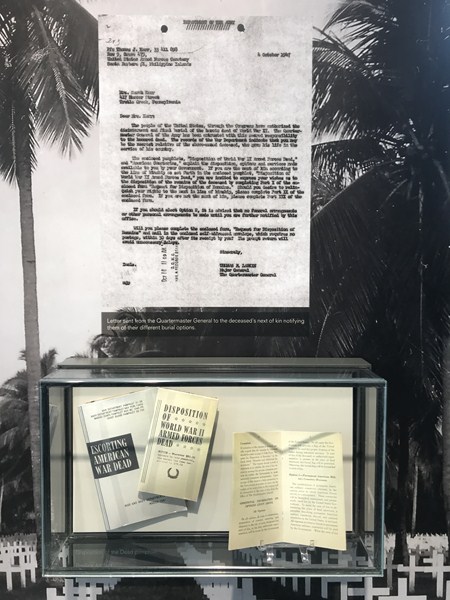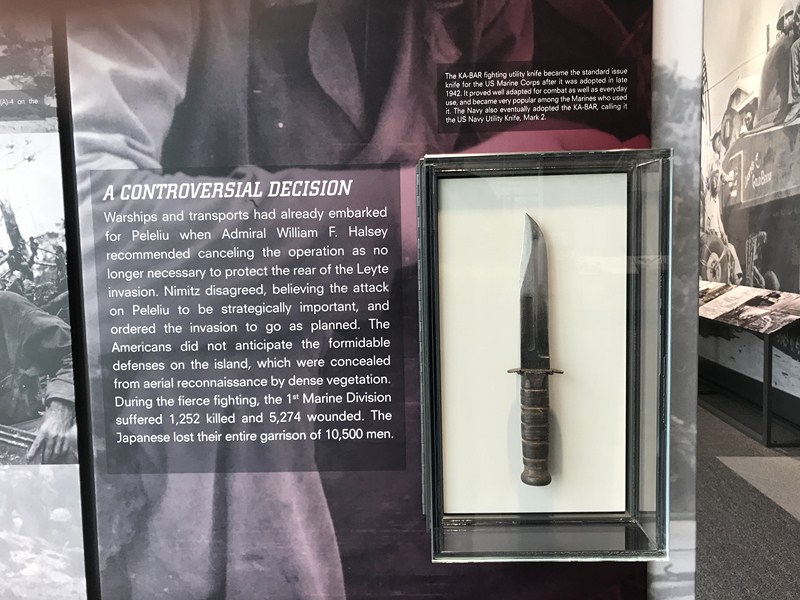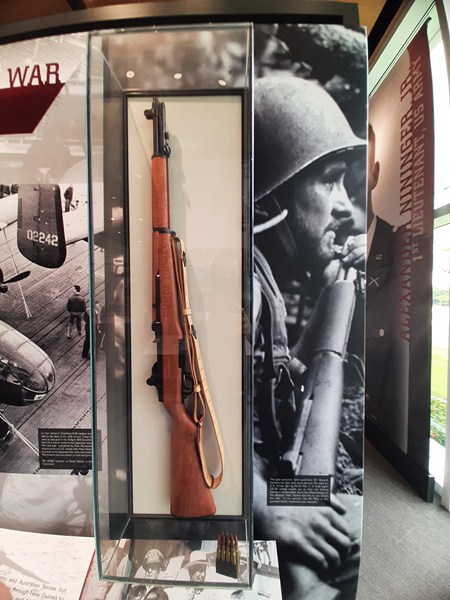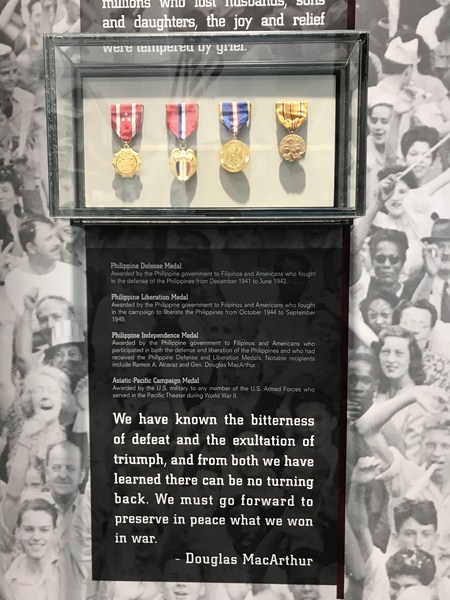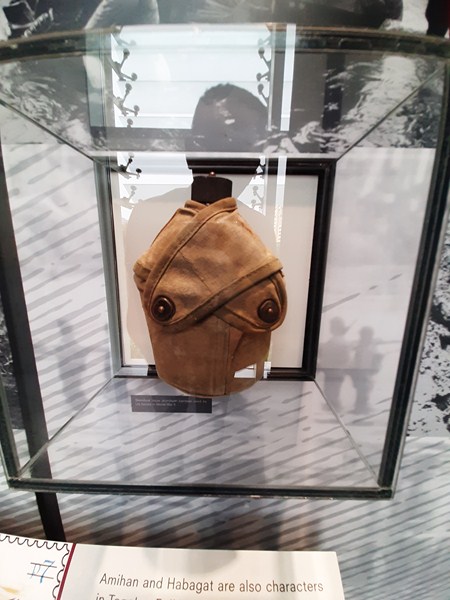The 11,000 sq. ft., nearly US$5,000,000, 2-level,interpretative Memorial Visitor’s Center, nestled and partially built into a hillside, was designed by Corpus Christi, Texas–based Richter Architects to complement and enhance the experience of visiting the Manila American Cemetery and Memorial.
Opened last October 20, 2019, the 75th anniversary of the return of Gen. Douglas MacArthur in the Philippines, it provides historic orientation to visitors from all over the world and amplifies the powerful message implicit in the largest American military cemetery on foreign soil.
Check out “Manila American Cemetery and Memorial”
The visitor center was planned so that, from the monument atop the hill, its roof line would be at eye level, with most of the building extending down and beyond view. Its low-key design minimized the mass of the new cast-in-place concrete structure and did not compete with the memorial or cemetery and detract from the serene landscape.
Much of the center’s exterior is high-performance thermal glass, designed to withstand typhoons, while the rest was clad in horizontal panels of Italian travertine, to appear more “of the earth as well as contrast with the similar sand-colored vertical slabs of the stone used for the chapel and the monument. Other exterior materials include white-painted steel, aluminum, and plaster.
Flat, concrete slab floors and roof and its shallow steel framing aim to keep the structure as transparent and unobtrusive as possible. Its expanse of glass connects the interior with the surrounding landscape while elements of limestone on its façade reference the existing monument and gravestones.
I entered the center, directly across from the chapel, from ground level, before descending from the lobby to the lower level through an open staircase, which preserves the sight line to the chapel outside. Teak, a traditional material in Southeast Asia, was used for the ceilings, stairs and as wall cladding throughout the interior. The lower-level windows are screened with louvers, allowing diffused daylight inside while focusing attention toward the crosses in the landscape outside.
Downstairs, it houses the main gallery which explains, in great detail, the many battles (Iwo Jima, Okinawa, Peleliu, Bismarck Archipelago, Guam, Wake Island,Tarawa Island, Leyte, etc.) within the Western Pacific during World War II via powerful, graphic and searing photos accompanied by clear, hard hitting descriptions that show the extent of the true horror that was caused.
Through letters and artifacts, it also shares the stories of several fallen soldiers (Pvt. Bernard Steenwyk, Lt. George H. Freed, 1st Lt. Alexander R. Nininger Jr., Ens. Frank E. Cook and T. Sgt. Charles Steiskal), prisoners-of-war (Pvt. Anthony Smith, PFC Jack Brady, PFC Domingo Balod and Lt. Robert Fulton), soldiers missing in action (Brig.-Gen. Vicente Lim, TM2-C. Andrew J. Kirskey and 2nd Lt. Earl R. Stone), soldiers missing in action and later identified (Pvt. Bud Kelder) and the Navajo Code Talkers of the US Marine Corps.
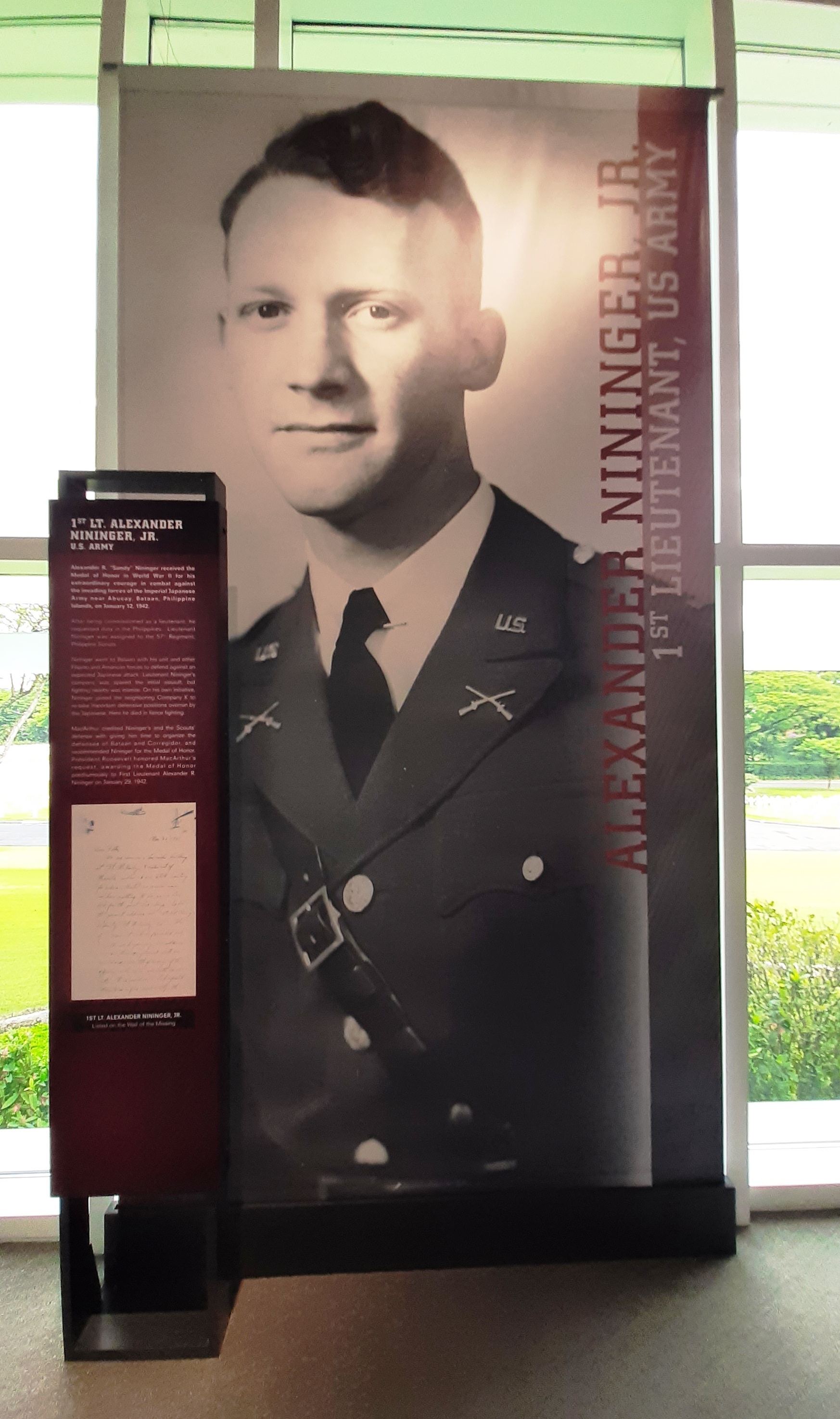
Alexander Nininger Jr. (1st Lt., US Army) – killed in action near Abucay, Bataan on January 12, 1942. He was posthumously awarded the Medal of Honor for leading an assault on Japanese positions. He was the first American army soldier to be so honored in the Second World War

Brig.-Gen. Vicente Lim (Bataan Survivor and Patriot) – a World War II hero, Lim was the first Filipino graduate of the United States Military Academy at West Point (Class of 1914).
Visual aids also illustrate life and events during the American Era (Under Foreign Rule, Americans in the Philippines, Economic Independence, Philippine Commonwealth, Peacetime Draft), the preparation for war (American Reinforcements, Mobilizing the Military, Recruiting and Training), the Japanese Invasion (Battle of the Philippines, Manila Under Attack, the Bataan Death March, POWs) and the Japanese Occupation of the Philippines (Society Under Siege, the Civilian Internees of Santo Tomas, the Resistance Movement, Resistance Networks) and the Liberation of the Philippines (Leyte Landing, the Liberation of Manila, Rescue the POW Camps).
Also illustrated are the burial and identification process of remains (Emergency Battlefield Burials, Grave Markers, Temporary Cemeteries, Graves Registration, Identification of Remains); the American Battle Monuments Commission (History and Mission, List of Cemeteries and Memorials around the world) and the Manila American Cemetery and Memorial (The Site, A Respectful Setting, Construction, The Memorial, The Memorials and Mosaic Maps, Honors to the Fallen).
Artifacts on display include Coke bottles and various calibers of World War II ordnance recovered on the Memorial site; a personal effects bag used by the Graves Commission to collect deceased personal belongings; a Quartermaster General’s letter to the next of kin of deceased, standard ration toilet paper and water purification tablet; an M1 Garand rifle, a standard issue aluminum canteen used by US Forces; a KA-BAR Fighting Utility Knife; the decorated mess kit used by Pvt. Anthony Smith during his time as a Japanese POW, medals (Philippine Defense Medal, Asiatic Pacific Campaign Medal, Philippine Liberation Medal and Philippine Independence Medal), a US War Ration Book and money used by Filipinos during the Japanese Occupation.
Also on display is a scaled model of the USS Bayfield attack transport and the Manila American Cemetery and Memorial.
The 50-seat theater features a short, 17-min, thought-provoking. documentary film which focuses on the sacrifices of American and Filipino soldiers during World War II in the country and in the whole Pacific. The center also houses an administration and reception area and support functions.
Memorial Visitor’s Center: American Memorial Cemetery and Memorial, 1634 McKinley Rd, Taguig City 1634, Metro Manila. Tel: (02) 8844-0212, (02) 8813-2521 and (02) 8894-3963. Fax: (02) 8812-4717. E-mail: supt@abmc-ar.org. Website: www.abmc.gov/Manila. Open daily (except December 25 and January 1), 9 AM to 5 PM.. Coordinates: 14.541°N 121.050°E. Admission is free but a valid photo ID is required for entrance to the cemetery.
How to Get There: The American Memorial Cemetery is located at the junction between McKinley Road and Nichols Field Road, about 11 kms. southeast of the center of Manila. It can be reached most easily from the city via EDSA to McKinley Road, then to McKinley Parkway inside the Bonifacio Global City. The Nichols Field Road is the easiest access from Manila International Airport to the cemetery. The entrance to the cemetery is at the far (east) side of the large grassed circle just beyond the military sentinel’s post which is at the junction of Rizal Drive and Eighth Ave..

